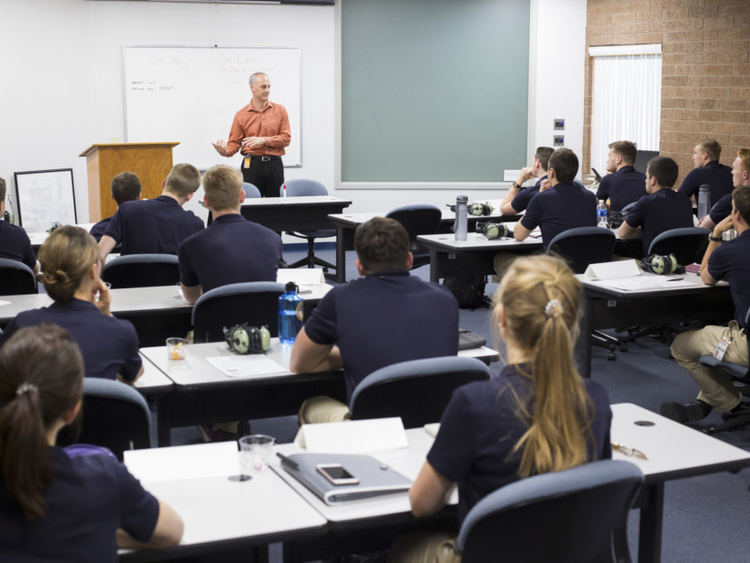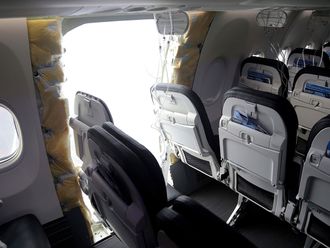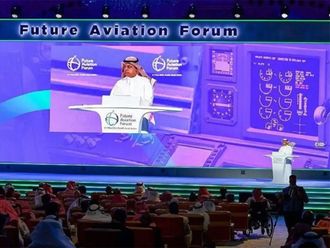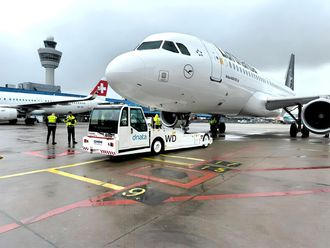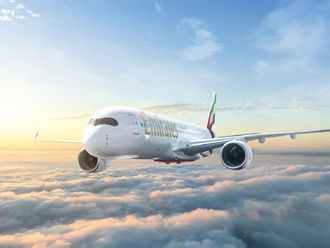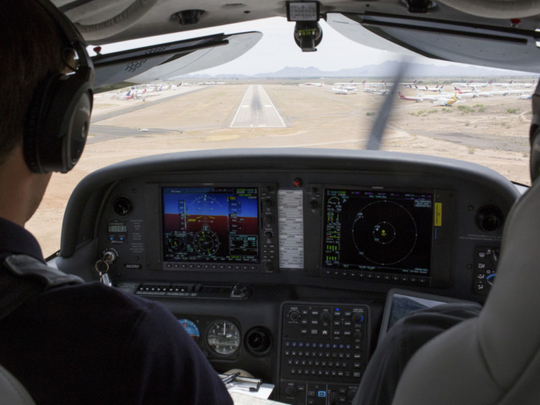
Michelle Hinds was working at a security job seven years ago when she began to take flight lessons at an airport near Ventura, California.
Hinds, 42, decided to make flying a career instead of a hobby. She gained experience at the controls, got a job piloting a propeller plane for a traffic reporter in Los Angeles and then went to work for a charter jet company. Now, she thinks she can move up to a regional airline, which would put her on a track for a job with one of the big US carriers.
“It’s the job seeker’s market,” she said. “I need them, for sure, but there’s so many companies that need me.”
Thousands of pilots at the largest US carriers are nearing retirement, opening up opportunities for those who pay up to $200,000 for the training necessary to advance as an aviator.
Although big airlines can recruit qualified flyers by turning to smaller affiliates and other regional carriers the way major league ballclubs dip into the minors, some regional carriers are having trouble replenishing their own rosters.
“I’ve never seen the industry be at this level of pilot demand,” said Kenneth P. Byrnes, the chairman of the flight training department at Embry-Riddle Aeronautical University’s campus in Daytona Beach, Florida. The tighter market extended to flight instructors, who can earn more as airline pilots.
Helane Becker, an airline analyst at the Cowen Group, said in a research note in 2017 that about 22,000 pilots at the five largest domestic carriers would reach mandatory retirement age, 65, by 2026.
The strengthening economy has also helped drive the increase in demand, with major airlines adding flights in some markets. At the same time, the supply of qualified flyers has dropped, as the stream of military aviators the big carriers have long relied on dwindles, and even the Air Force struggles to find pilots.
Many aspiring pilots, drawn partly by wages that can top $300 an hour, want to end up at one of those big carriers. Doing so requires extensive training and years of practice — with good reason, as an April episode on a Southwest Airlines flight showed.
An engine on the plane had an uncontained failure, throwing off debris. One piece pierced a window, partially pulling a female passenger out through the hole. She later died.
The incident might have been worse if Tammie Joe Shults, the former Navy pilot who was flying the plane, had not calmly steered it to a safe landing. Although the episode was unusual, pilots must be as calm under pressure as Shults was, said Byrnes of Embry-Riddle, where 1,830 undergraduates enrolled in the main pilot program at the university’s Florida and Arizona campuses in fall 2017, the most since 2008.
“We’re not building pilots per se,” he said. “I like to tell our students we’re training them to be decision-makers who happen to know how to fly an aeroplane.”
That training starts on the ground, with courses in navigation, weather, aerodynamics and other flight science disciplines. From there, the process of learning to physically fly a plane “starts with the very basics of how to taxi and use their radios,” said Thomas R. Lippincott, president and chief executive of Lufthansa Aviation Training USA, which runs a flight school in Goodyear, Arizona.
Some flight training also happens on the ground in immersive simulations that can be made to resemble situations that could be catastrophic in the air. Pilots with experience can move on to accumulating flight time in the kinds of jobs that Hinds has held. The next step is a job at a regional airline, some of which are affiliated with, and provide a pipeline to, major carriers.
In a sign of the smaller airlines’ increasing need, they have been raising pilots’ pay. Average annual wages for new first officers flying the smallest planes rose to almost $38,600 in January from $24,355 in 2014, a 58 per cent increase, according to data compiled by Kit Darby, a career consultant for pilots.
New hires sometimes get bonuses, too. Trans States Airlines, based near St. Louis, said in January that it would offer incoming first officers $44,000 over two years. Air Wisconsin said it offered bonuses of up to $57,000.
“The regionals have been bending over backward to bring pilots in,” said Patrick Smith, a pilot who has written about the profession.
Despite the higher pay, the Regional Airline Association, a trade group in Washington, said its members were having trouble finding and keeping pilots. The group blamed a 2013 Federal Aviation Administration rule that increased to 1,500 from 250 the number of hours of flying a pilot needed to qualify to work as an airline first officer. The rule was adopted after a Colgan Air plane crashed near Buffalo, New York, in 2009, killing 50 people.
Great Lakes Airlines, which mostly served smaller airports in Midwestern and Western states, cited a pilot shortage when it said in March that it was shutting down operations. The regional airline group’s president, Faye Malarkey Black, said afterward that the 2013 rule made it “incredibly difficult for new pilots to obtain the training and experience needed to take flight.”
Pilots’ unions defend the new standard, saying it helps ensure the aviation industry’s track record of safety. Many mainline carriers are increasing their own recruiting and training efforts.
Lufthansa has long operated the Arizona flight school now led by Lippincott, and some US airlines are emulating their German counterpart’s example, creating programmes to recruit and train pilots with no previous experience.
Envoy Air, a wholly owned regional subsidiary of American Airlines Group, gives signing bonuses of up to $45,000. It also offers its recruits what may be an even more significant benefit.
Pilots who get hired by Envoy will be flying for American Airlines in five years, “no questions asked,” said Pedro Fabregas, the company’s president and chief executive. Many regional carriers that are part of larger airline consortia use the same model.
JetBlue, a carrier based in New York that does not have regional affiliates to draw from, initiated its Gateway Select programme in 2016. Participants receive about two years of training, and then complete their flight hours by working for two years as instructors at CAE, an aeronautical school that is the airline’s partner in the programme.
“We thought there was a candidate pool out there that was untapped,” said Warren Christie, JetBlue’s senior vice0president of safety, security and air operations. The programme, he said, created a career opportunity for people “who might not have thought the industry was an option for them.”
The first group of enrollees, which included a heavy-machine operator and an accountant who was looking for a career change, completed their flight training April 23.
American Airlines recently announced a similar programme for training nonpilots. American’s Cadet Academy, which is separate from its regional subsidiaries’ recruiting efforts, started accepting applications in April.
Not everyone believes that the looming retirements will generate a pilot shortage.
Capt. Tim Canoll, president of the 60,000-member Air Line Pilots Association, said airlines did not have to replace every pilot who retired. Instead, he said, companies could use bigger jets to fly more passengers with fewer aviators, or could try to recruit people who were licensed to fly but not already working in the industry. Carriers that offered top-tier pay, advancement opportunities and other benefits did not have trouble recruiting, he said.
“We don’t believe that exists,” he said of a shortfall. “We see clearly a free market operating within pilot labour.”
Still, for many newcomers to the industry, moving up to a top position no longer seems out of reach.
Riley Shire, 23, graduated from Embry-Riddle in 2016 and built up his required hours by working as a flight instructor. He eventually took a position at Endeavor Air, a Delta Air Lines subsidiary, which puts him on track to eventually fly for Delta.
He earned $60,000 in his first year, a figure that included a one-time $10,000 bonus. “You definitely feel like you have options,” Shire said. The airlines, he added, “come to us at this point.”
New York Times News Service


